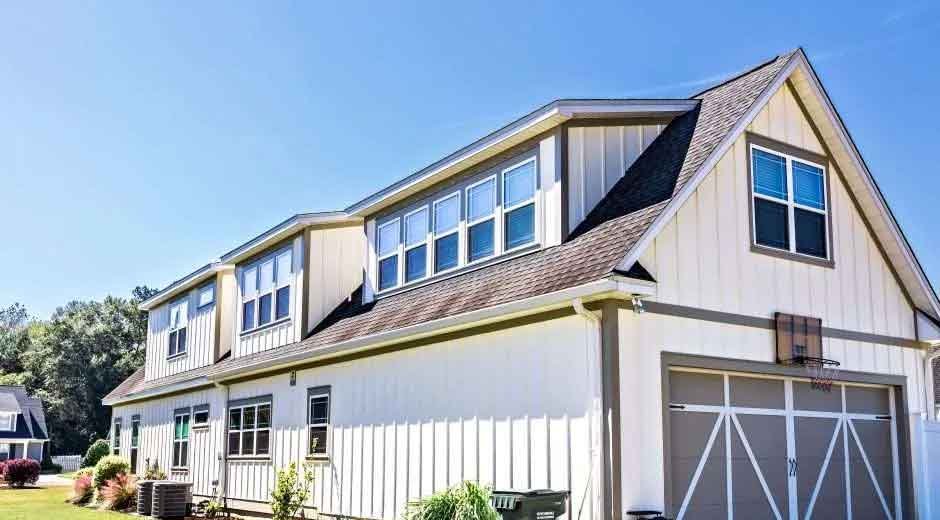Skip to the good bit
ToggleWhy Siding Matters for Every Home
Siding functions as a comprehensive barrier that shields a home from persistent weather shifts, pests, and dangerous moisture infiltration. High-quality siding ensures structural integrity by protecting the framework against rain, wind, hail, and UV sunlight that can effortlessly degrade lesser materials. Without reliable siding, minor cracks or leaks can trigger wood rot, mildew growth, and even reduce indoor air quality. The role of siding becomes even more prominent in regions prone to storms or fluctuating temperatures, where nature’s forces can be particularly harsh on exterior materials. Timely siding repair and replacement are essential to ensure that this critical armor remains intact and effective, preventing costly maintenance from arising due to neglected cracks, warping, or holes.
Siding is crucial in creating a home’s unique visual character, enhancing market value, and yielding a higher return on investment. Clean lines, finished corners, and well-chosen colors can significantly elevate property values, while faded or damaged exteriors may deter interest and reduce resale potential, notes the Coastal Oak Property Management company. Therefore, both function and aesthetics should be considered in siding decisions
Understanding Siding Costs
Budgeting for new siding is complex, as labor, removal, disposal, tools, and prep work can significantly impact the overall cost. Vinyl offers the lowest initial price, but higher-end options, such as fiber cement, stucco, or brick, require larger budgets due to the premium materials and increased labor costs associated with them. Wood siding costs less upfront but requires regular repainting, caulking, and pest management. Fiber cement falls in the middle in terms of cost and maintenance, requiring periodic painting for enhanced water resistance. Homeowners often prefer investments that balance mid-range upfront costs with low recurring care requirements, as non-standard shapes, multiple gables, or special trim detail may require additional materials and labor.
Popular Siding Materials and Their Pros & Cons
Homeowners have a variety of siding options, including classic staples like vinyl, wood, and brick, as well as advanced materials like fiber cement and metal panels. The choice depends on durability, price, and desired appearance. Vinyl is popular in North America due to its cost-effectiveness, moisture resistance, and low maintenance requirements. Fiber cement is resilient against fire, termites, and extreme weather changes. Wood siding requires routine care and annual inspections. Metal siding is ideal for creating a modern, urban, or industrial look.
Energy Efficiency and Insulation Factors
Siding has a direct influence on a home’s overall energy performance. While no exterior finish can replace proper wall insulation, certain siding products can reduce heat transfer and wind penetration, helping homes maintain comfortable temperatures and improving HVAC efficiency. Insulated vinyl features foam backers that enhance the R-value, blocking drafts and winter chills. Similarly, fiber cement and engineered wood can limit energy loss, especially when paired with weather-resistant wraps and proper sealing.
According to the Department of Energy, well-installed siding can help tighten a building’s envelope, reduce the load on heating and cooling systems, and lead to monthly savings. For those in climates with dramatic summer highs or frosty winters, insulated siding helps maintain more stable indoor temperatures. Combination solutions, such as pairing siding upgrades with attic insulation or new windows, offer the most effective path to significant energy savings and lower utility bills throughout the year.
Weathering the Elements: Durability in Action
Weather exposure is a crucial test for siding, especially in areas with heavy rainfall, snow, humidity, or scorching sun. Materials like fiber cement and brick can withstand storms, pest infestations, and fire threats with minimal wear and tear. Advanced vinyl siding, due to manufacturing improvements, resists color fading and brittle cracking better than older versions. However, even the most robust siding can show damage from debris or repeated hail, requiring proper installation and fast repairs. High-quality engineered wood or metal materials offer peace of mind, security, and lower upkeep bills.







